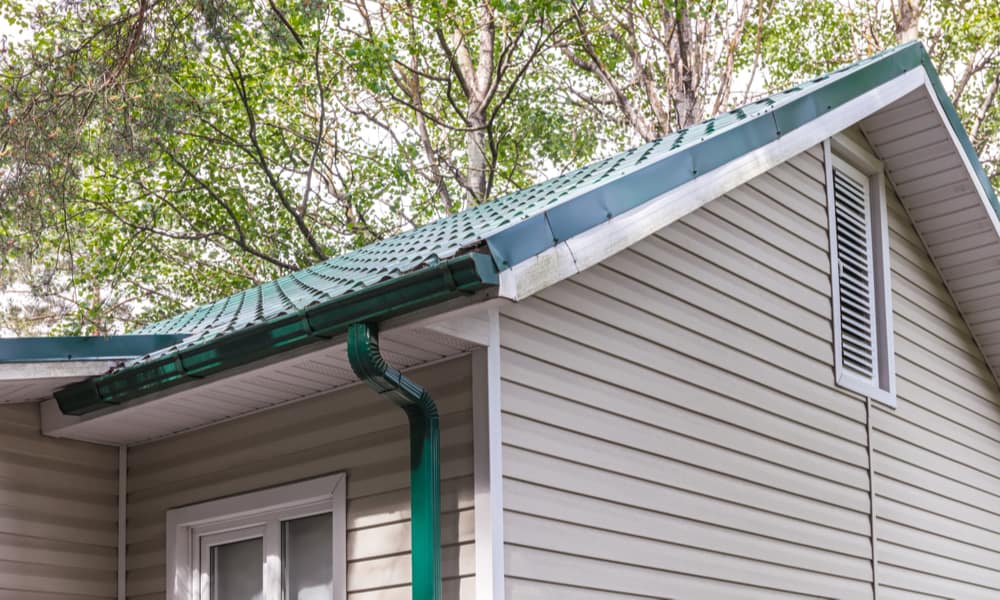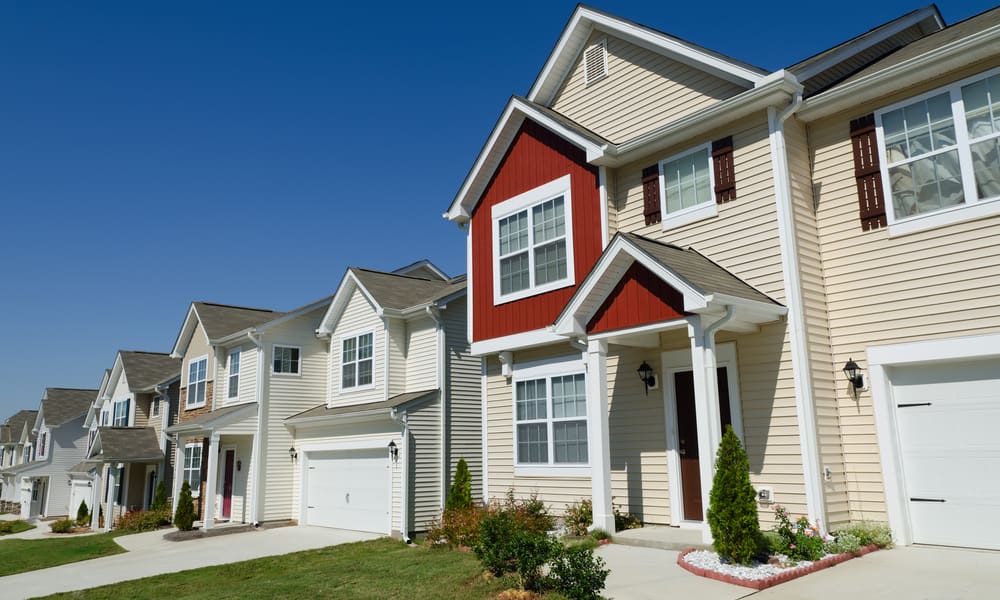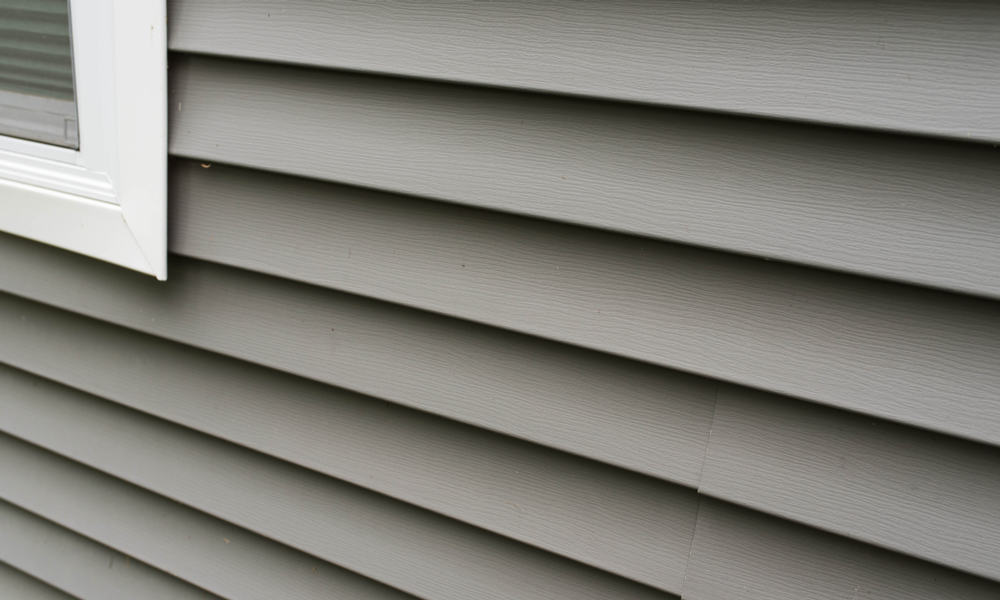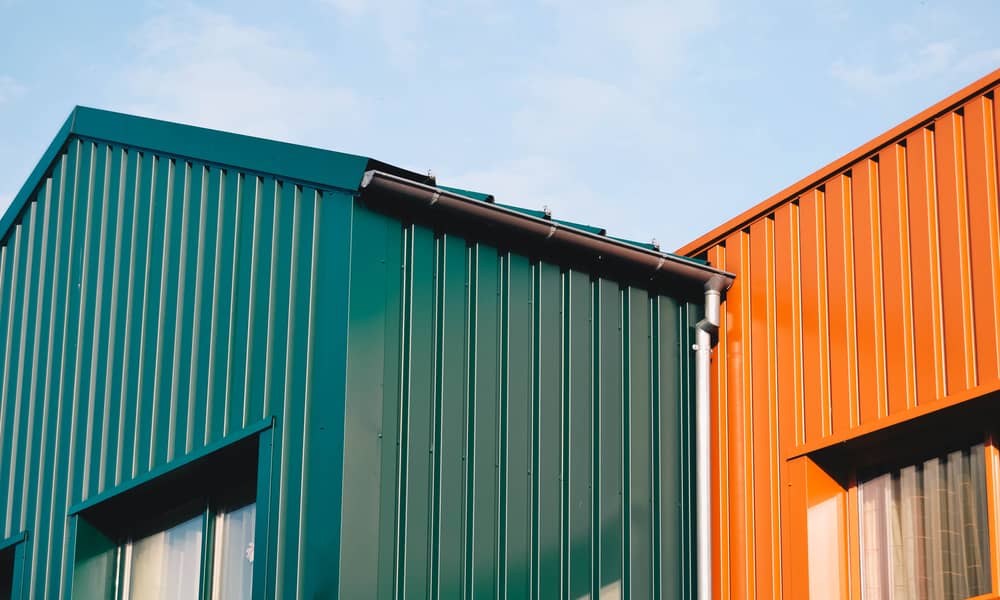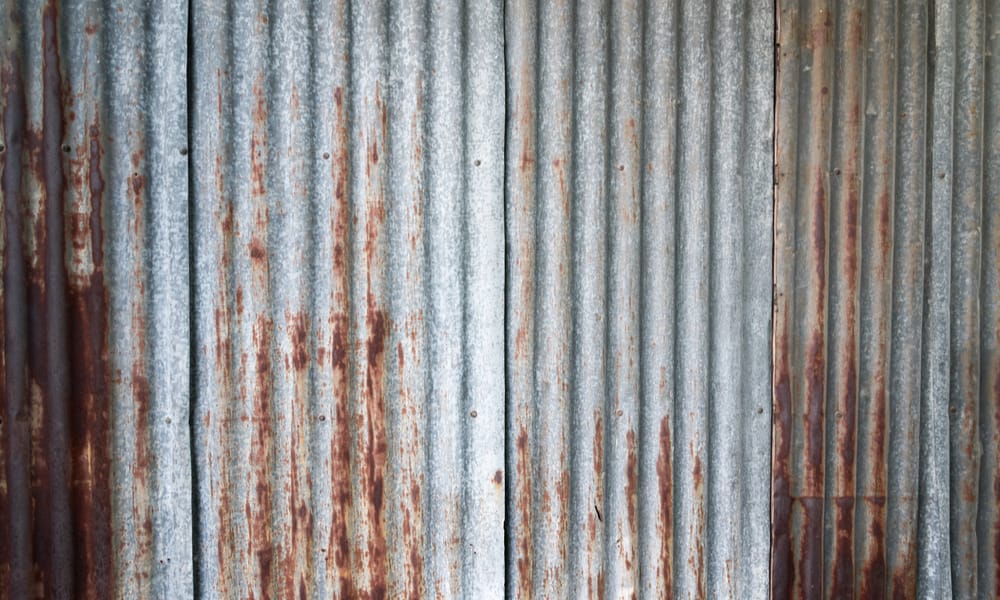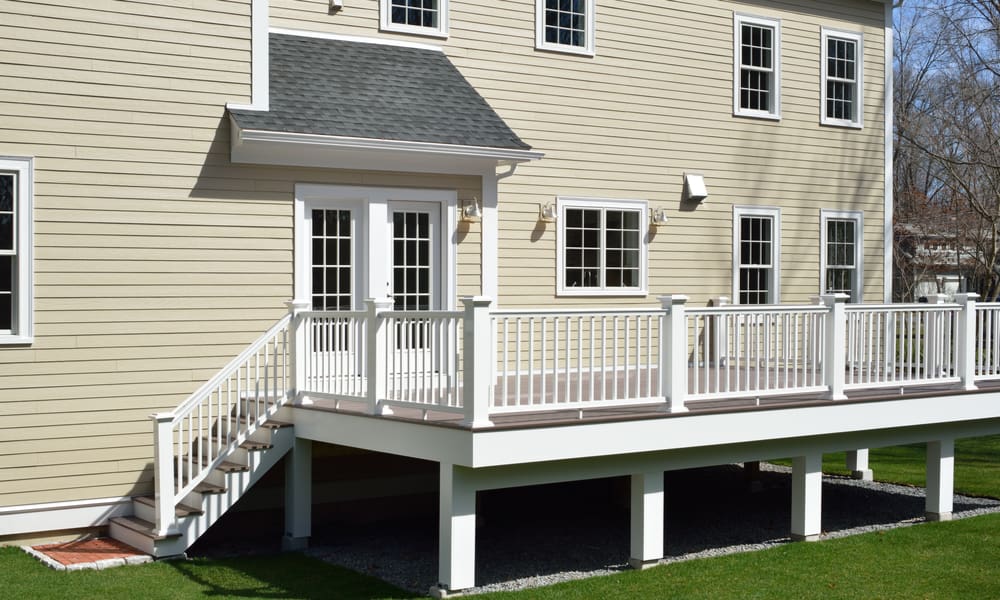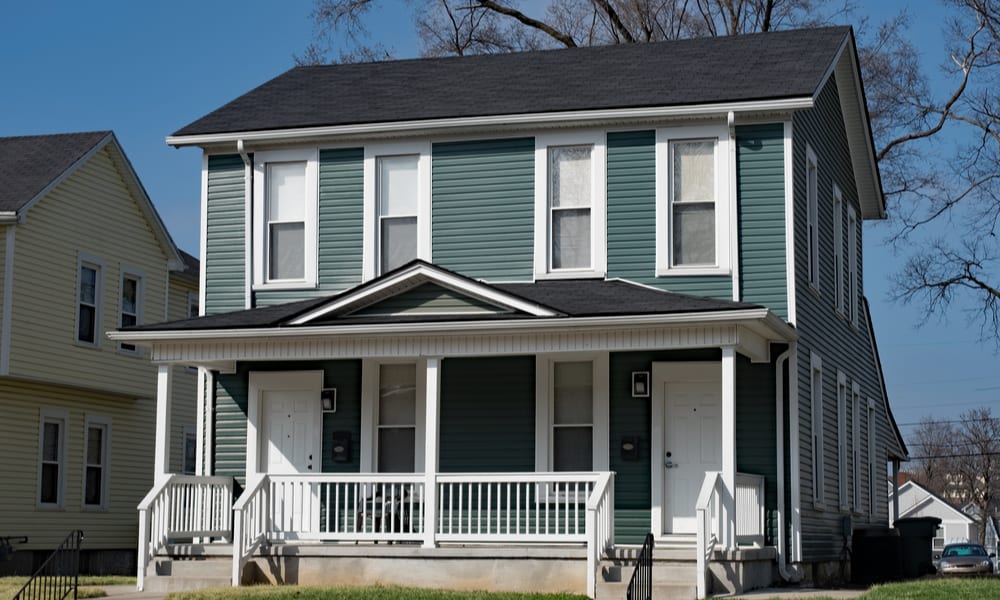Choosing the right exterior for your house is a tough call. The modern market offers a variety of materials, colors, and designs. So, you should consider their cost, the climate in the region where you live, and the way of installation before picking out the desired material.
You will face all these challenges once you decide to set up or replace your sidings. Since each material has its pluses and minuses, you should learn how to choose between steel vs. vinyl siding.
Table of Contents
Steel siding History
Manufacturers introduced steel sidings in the 1940s in commercial and residential buildings. However, most homeowners disliked the metallic appearance, and they started widely accepting these sidings only in the 1980s when manufacturers added embossed coatings.
That way, steel siding became an attractive option, in addition to its durability. It quickly replaced wood siding, which deteriorated due to weather conditions and required regular maintenance. Keep in mind that steel still can rust, but it can take decades before such a thing happens.
Vinyl siding History
In the 1950s, homeowners got another siding choice in the form of vinyl. This material quickly gained popularity since it is affordable, and you can install it quickly. It also comes in a wide color and design selection.
On the other hand, don’t forget that PVC (polyvinyl chloride), which contains many toxic substances, including chlorine-based chemicals, is one of the crucial vinyl components. Plus, it is not rare for vinyl to consist of lead and mercury.
Factors Affecting Siding Performance
Hopefully, a house siding lasts for decades once you install it. That is why there are several things to consider before making a purchase. Primarily, you should think about the climate in the region where you live and typical days in the summer and winter months.
Weather conditions are a grave threat both for your siding aesthetic and its performance. In the dilemma of steel vs. vinyl siding, you need to choose a material more resistant to weather conditions.
Moisture
Humidity, heavy rain, and snow can cause moisture damage on your sidings. On the other hand, you will need exterior elements with a water-resistant coating if you live in a sweltering climate.
Unfortunately, vinyl will quickly warp, crack, and discolor in a wet climate. Plus, you can even find mold on the siding due to prolonged exposure to moisture. On the other side, most steel sidings come with protective layers, which prevent corroding, rusting, and humidity damage.
Sun exposition
If you live in a warm, sunny climate, you should be aware that vinyl fades over time, unlike steel siding. As the sun moves over the sky during the day, siding parts become exposed to its rays from different angles. That leads to color fading over time. To makes things worst, discoloration is always uneven and unappealing.
Once you expose a vinyl to the sun, it can also expand. Therefore, your side panels will buckle and warp over the years. If you live in an area where most days are sunny and hot, the better option is to go with steel siding for your home.
Surrounding area
Take a look around the house before installing sidings. If it lies in the shadow, you can expect some mold growth between the panels. Plus, a sharp branch from a nearby tree can scratch your siding, leaving a nasty mark. As you can see, it is necessary to consider all small details that can affect your facade in any way.
Steel Siding Advantages
As I mentioned before, steel siding is a popular choice among many homeowners. The reason is in many plusses of this material, including the most crucial:
Durability
An average steel siding lasts between four and six decades. It remains intact and keeps its appearance despite all weather and environmental conditions.
Steel is also one of the strongest materials used for houses, and different coatings provide additional protection. In other words, you won’t need to worry about pests, cracking, or water damage when choosing this option.
Fire resistance
Contrary to vinyl siding, steel isn’t flammable. If you live in an area with frequent wildfires, the chances are that local laws require the house has a Class A fire rating, which is precisely how inspectors grade steel siding.
Environmentally friendly
You have probably known that you can recycle steel over and over again. In fact, it is the most eco-friendly material when it comes to siding.
Besides, most manufacturers use energy-efficient finishes that reflect light, thus keeping the interior temperature stable. That way, you will save both money and energy.
Curb appeal
Most homeowners agree that steel siding provides a more appealing curb than vinyl. You can pick out from a wide choice of colors, patterns, and designs. In many cases, steel siding panels are longer than vinyl siding, and they simulate the elegant appeal that many find desirable.
Simple maintenance
Once you install steel siding, there is almost no maintenance. You can wash it from time to time to remove accumulated dust and debris. Use those opportunities to inspect for any aesthetical changes or damage, and your job is done. There is no need to paint, prime, or caulk your steel siding.
Steel Siding Downsides
As you have already known, no material is perfect, not even steel. Some of its common minuses are:
Climate limitation
Experts advise against steel siding on coastal houses since the air near the ocean is moist and salty and can accelerate the corroding of steel panels. Anti-corrosive finishes may slow down this process for a while, but you will need to replace your siding sooner or later.
Denting
Steel siding is prone to scratches, damaging, and denting over time. It won’t bend or crack on the sun like vinyl, but any strong impact can leave a panel damaged, so you will need to replace it.
The best way to prevent denting is by purchasing thicker steel. The bigger gauge siding panels have, the less likely your house facade will suffer from the impact.
High cost
The most significant steel disadvantage is its price. Steel siding is way more expensive than vinyl, with the average cost between $5 to $10 per 1 sq ft (0.09 m2).
As always, the bigger the house, the more you need to pay. The whole sum can reach thousands of dollars with the installation, painting, and labor costs. However, your bill will depend on:
- Steel thickness
- Paint finish you choose
- Additional protective coatings
- House size
- Market fluctuations
- Location
Vinyl Siding Advantages
Despite all the positive sides of steel, vinyl is a popular and widely common siding material. The reason lies in many advantages, including:
Affordability
You can get vinyl siding as cheap as $1.6 per 1 sq ft (0.09 m2). However, the prices on the expensive side can reach up to $10. The primary difference is whether you choose insulated or non-insulated vinyl.
The insulated vinyl siding provides better thermal isolation and energy savings, thus lowering your bills. Still, most homeowners choose more affordable panels since their low cost is the vital advantage over steel siding.
Quick installation
Nowadays, most manufacturers sell custom-sized vinyl siding panels with predrilled holes. Plus, they are featherlight and slim. That means you can quickly mount them on your own and save money intended for labor and installation.
If you have to work on a limited budget and time, vinyl siding is a perfect solution since you can install it in a matter of hours.
Vinyl Siding Downsides
On the other hand, vinyl siding is more prone to weather damage than steel. Some of its vital minuses are:
Not eco-friendly
There is no way you can recycle vinyl, at least for now. Plus, PVC production releases harmful greenhouse gasses. If you look for an ecological siding, consider other materials, like steel.
Keep in mind that vinyl releases the hazardous toxin dioxin once it heats on the sun. If you live in a warm climate, it is better to consider more eco-friendly steel siding.
Limited duration
The vinyl siding lasts much shorter than a steel one. In most cases, you can count on 20 to 30 years of its durability. Potentially, there are ways to prolong its longevity with proper maintenance for another ten years.
Less appealing
The most unappealing thing about vinyl siding is discoloration when disposed to sunlight. Besides, bends and cracks are also high on the list of homeowners’ complaints. Many people think even the new vinyl siding has plastic, fake, and unaesthetic effects.
Flammable
No matter how careful you are, accidents do happen. It is vital to keep in mind that vinyl siding is flammable. Plus, it will release highly poisonous dioxin and chlorine as plastic burns.
In other words, you risk asphyxiation due to PVC fumes before the fire even reaches you in the case of an unfortunate event. That is why many homeowners put safety first and install steel siding since it has Class A fire resistance, which is a huge advantage.
Summary
Both steel and vinyl sidings have their pluses and minuses. Still, steel provides better protection for your home, despite its significantly higher cost. It also lasts more than vinyl siding. However, many homeowners settle with vinyl due to its affordability and quick DIY installation.
